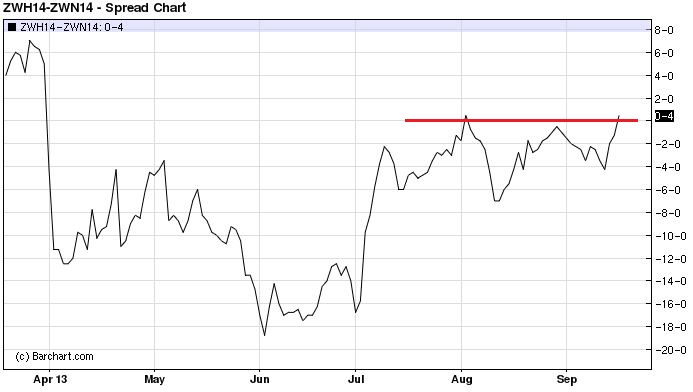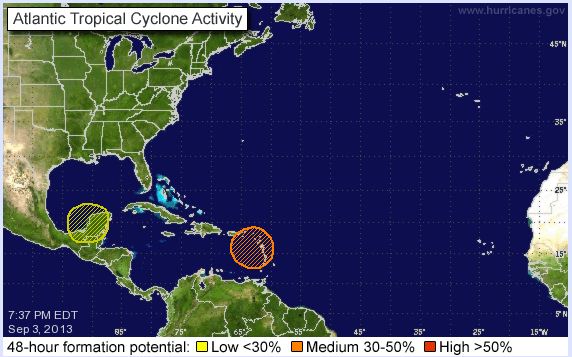
Once again it's weather that is the key driver of natural gas, with both heat and potential storms on the minds of traders.
The latest NOAA 8-14 day forecast is continuing to show a large portion of the US expecting above average temperatures.
While over the last few days there have been a number of tropical weather developments that have the potential to turn into tropical cyclones and cause headaches in the Gulf of Mexico.
I've been keeping a close eye on the Nov13/Jan14 spread and as you can see from the chart we are back at a resistance level.
We also have a nice seasonal window that runs from the 18th of September through to October 10th.
That said I'm still waiting on some more signs of a reversal. It's a little unclear how the tropical weather will develop, even though they are all only low probability events, and I don't want to step up too early.
The weather, whilst being above average, is most probably not going to influence injections into storage to the same extent as a heatwave in the middle of summer.
So for now keep watching the weather, waiting on signs of a turnaround. This trade is likely to be offering some good potential if we're patient.























